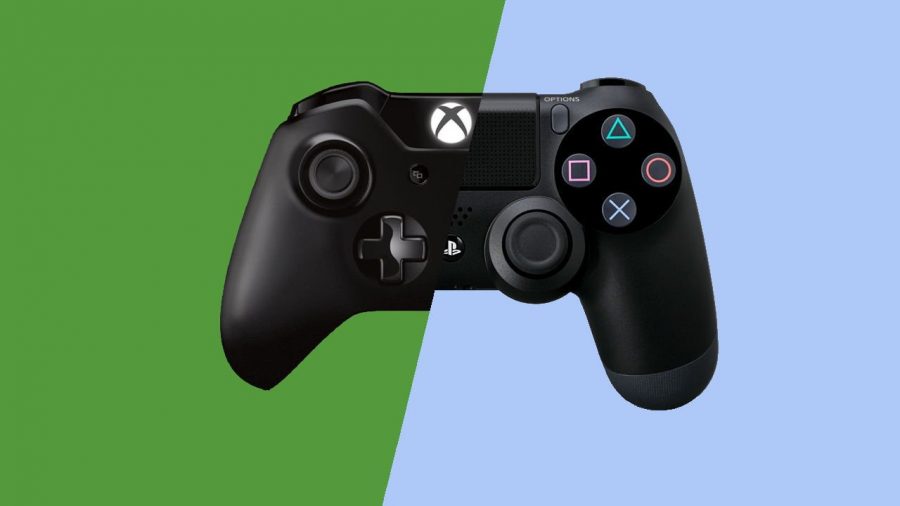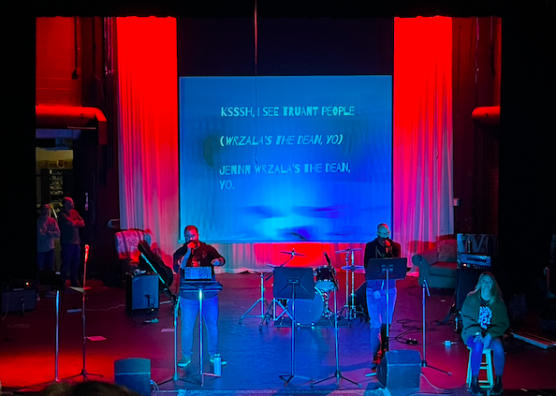Comparing 9th Generation Gaming Consoles
September 25, 2020
Even a pandemic cannot hinder our quest to apply groundbreaking technology to video games. The Ninth generation of gaming is to come this fall, with contenders from Sony, NVidia, and perhaps even Microsoft. Let’s look at the competition:
Sony: The four time champion of general home media, the Playstation 5 is probably exactly what you’d expect: the fifth multimedia device that can play movies, video games, music, and more. That is, assuming you’re willing to spend the extra $500 for the model with the disc drive. If not, you’d get it for $400, with the ability to play some movies, some video games, some music, and more, assuming you have the storage.
Microsoft: While the Xbox has been the sick man of the console wars since the introduction of the Kinect, perhaps a cure is to come. Microsoft has decided to introduce the 4th line of Xboxes, the $500 high powered disc loading Xbox Series X, or the $300 discless budget powered Xbox Series S. Both are to be sold alongside Microsoft’s previous Xbox models, the Xbox One X and the Xbox One S. That sure won’t be confusing!
NVidia: After some failed experimenting with the RTX 2000 series (we salute those who emptied their wallets on them), the RTX 3000 series has come to wreak havoc upon any users of a PC. The cheapest card, the 3070, is $500, the same price as the upper consoles while packing in tons of features.
Is it worth buying? Well, if you already have an 8th generation device, then no. Both Sony and Microsoft have announced their plans to support their previous console to varying degrees:
Sony: While they were going to have the PS5 adopt a separate path from the PS4, after seeing what Microsoft is planning to do, they are now deciding to copy them and do exactly the same thing. The PS4 will be supported for a long time, with many so called “PS5 Exclusives” now becoming “Playstation exclusives,” as PS4 versions are now under development. PS4 owners can continue to stick to their 7 year old hardware for the years to come.
Microsoft: The Xbox Series S and X are considered to be a “soft upgrade” from the Xbox One, with the Xbox One to still get plenty of support and new features in the long future. Most games for the Xbox Series X and S are likely to also see Xbox One versions, and all Xbox One games are playable on the Xbox Series X. If you own an Xbox One, you’ll be glad to hear this.
NVidia: I mean, you don’t need a new graphics card to enjoy the latest PC games. Any card from the 2010s is probably good for another 10 years.
But let’s say that you own a 7th generation device. Then of course now’s a great time to upgrade. The PS3 and Xbox 360 are beginning to lose general support, and GTX cards are beginning to falter in performance with the latest and greatest PC games. But, what is there to pick and see with these new devices?
Well, to start, all the new devices have ray tracing and an SSD, so it’s safe to say that they’ll look good and feel good. So what else do these companies have up their sleeve?
Sony: Sony’s hardware is probably the weakest among the competition, but with the amount of second and third party support it has, it’s likely that every drop of juice will be squeezed out of the PS5. The new Ratchet and Clank already looks promising, from the accurate reflections of Clank’s metallic exterior to the seamless loading of new game worlds thanks to the amazing optimizations done by Insomniac Games. Mostly though, it seems that Sony will stick to realistic cinematic experiences. I wonder what Naughty Dog’s next game will look like on the system?
Microsoft: The major problem of Microsoft’s Xbox 360 and One was their lack of proper second and first party support, an issue they’re planning to negate with the 4th generation. With Microsoft’s planned purchase of Zenimax, the Xbox platform will have exclusives for series such as Fallout, the Elder Scrolls, Doom, Quake, Wolfenstein, and more. If Microsoft does not mess this up, they have a very good chance of becoming equivalent with Sony.
NVidia: As more and more applications support RTX, the 3000 series has a solid base to land on, for anyone who can afford it. Even Blender can utilize RTX for fast rendering of their projects, allowing any VFX artist to quickly see what they’re making instead of having to wait the standard 10 minutes or so otherwise.
Wonder which one’s best for you? All of the new platforms have something up their sleeve over the others, so it mostly comes down to the exclusive features of each console, since they’re all powerful in their own right; if you want cinematic experiences, then you can buy the Playstation. If you care more about gameplay than story, then the Xbox’s soon-to-be exclusive titles will likely be a blast for you. If you need to do a lot of computer related things, then I’m sure that a GPU would help in performing many tasks, especially in the visual field. The choice is yours, my friend.



